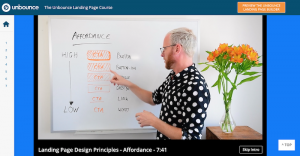What would you do to gain more leads than 40 percent of your competitors?
The answer is much simpler than you might think: build a business blog.
According to Hubspot, 60 percent of businesses who blog acquire more customers. Considering blogging is free, unlimited and has a practically eternal lifetime value, it should be a no-brainer, right?
Well, not quite. They key to building a good business blog is doing it consistently. Whether you publish once per week or daily, you must commit to maintaining that schedule in order to see real results.
This unfortunately means answering one of the most intimidating questions each and every time you sit down to write: What in the heck should I write about?
Luckily, with a little planning, you shouldn’t have to generate a brand new idea on a daily basis. Here are three ways to create a wealth of blog ideas that you can turn to each and every time you blog.
Thought Leader Insight
First and foremost, become a voracious reader. Not only will this keep you up to date with the latest news in your industry, you’ll gain valuable insight into which topics are trending right now.
Quite frankly, this is the easiest way to come up with blog ideas. Simply subscribe to industry newsletters, read competitor blogs and set up an RSS feed to start. Make it a point to read for an hour per day and in just a few weeks, you’ll be more blog-ready than ever.
Here’s how to create ideas with this method: When reading industry and competitor blogs, look for common themes. For example, is there a new product release or big news that you haven’t covered yet? If so, blog on that topic right away.
If it’s a slower news week, look at the types of advice and topics coming from your competitors and larger industry. See if you can find a fresh take hidden in the topic at hand.
For example, we loved CoSchedule’s blog about five audience assumptions that can harm your content marketing strategy. We decided to take a similar topic (audience assumptions) and show the opposite angle: the audience assumptions you must make in order to be successful.
Note: make sure you credit the original, even if you’re spinning off the blog into a completely new topic.
Keep a Blog Log
Heard a quote at a conference that really made you think? Write it down. Read a report that shines an interesting light on your target demographic? Log it.
For our blog, we have over 100 ideas stored at any given time. Some of these will never see the light of day, but some will become great go-to topics for slower news weeks to come.
Keep in mind that your ideas don’t have to be fully baked when you log them. Just throw them in the hopper with a brief description, a possible author and the source. If you have an idea of when the blog would be most timely, include that, as well.

Develop a Blog Type
What if you have a tiny kernel of an idea but don’t know how to develop it further? Maybe you have the opposite: an incredibly broad topic like “content marketing sales funnel.”
Either way, figure out a general blog type. This often results in a fully fleshed out topic (or even two). Let’s run through the different types:
1. Thought leader blog
This is an advice-oriented piece that offers history, explanations and above all, personal experience. This is a great option for framing an anecdote you want to tell, personal lessons, etc…
2. Opinion piece
These blogs are a great option for taking a stance and starting a conversation or debate.
3. Instructional How To
Arguably the most common blog type, this is a fairly simple way to capitalize on your own or other authors’ expertise. It is a how-to piece that lays out all of the steps and tips needed to accomplish a task. Chances are, you know way more about the topic at hand than you suspect, making this an obvious option for broad topics or narrow niches in which you are a true expert.
4. Timely Coverage
While most of the other blog types take one or two weeks to be written, edited, formatted and published, timely coverage needs a much shorter timeline – maybe two or three days. These are more difficult to turn around quickly, but they are very important to establishing yourself in the current conversation.
Once you’ve got the ideas flowing, you can begin to set up an editorial calendar that will help you stay accountable to deadlines. This will also make it easier to create themes, series ideas and visual elements as you get your blog underway in earnest.
Just make sure that consistency is still top of mind. After all, readers will only become customers if they can depend on your blog as much as your product or service.
Still having trouble coming up with ideas? Check out our post on creating seasonal content, or look to our quick guide on determining the best format for your blog posts. Be sure to subscribe for even more ideas on building your business through powerful content marketing.
Digital & Social Articles on Business 2 Community
(345)







